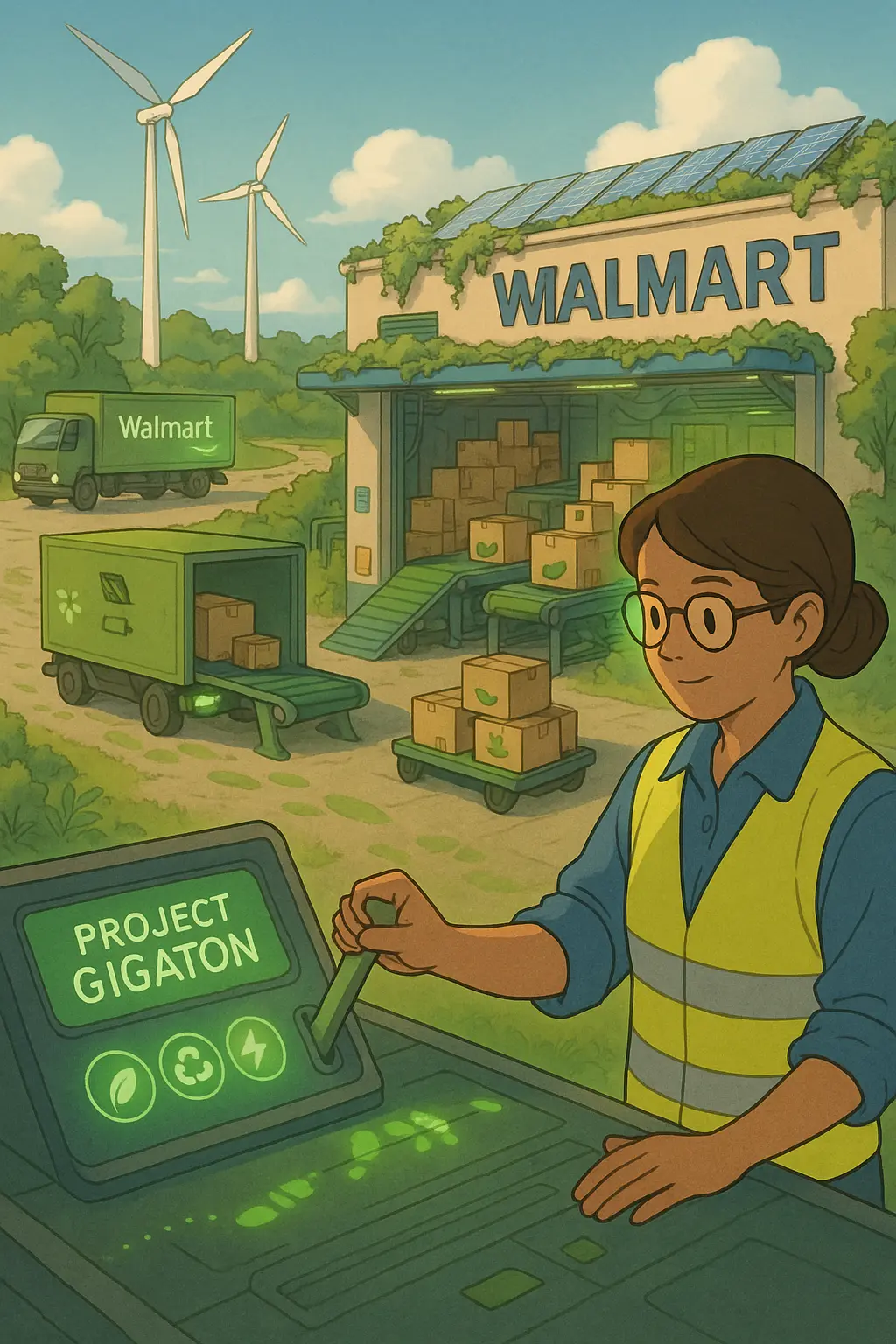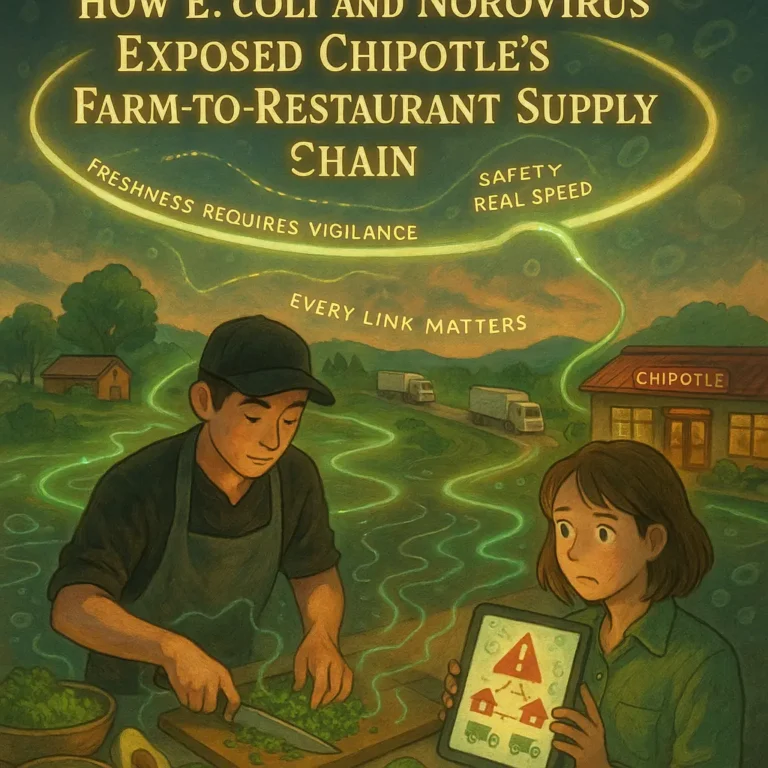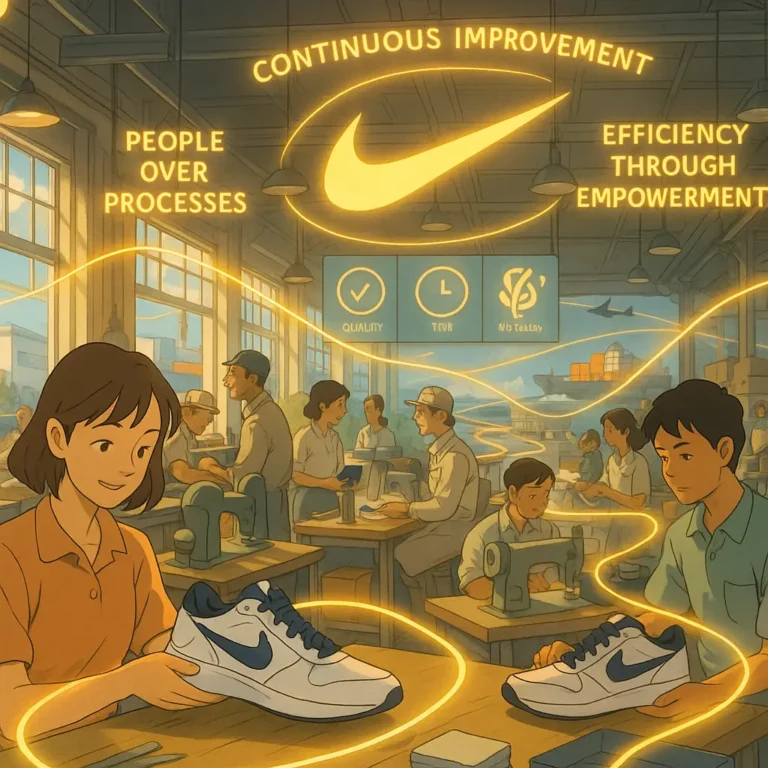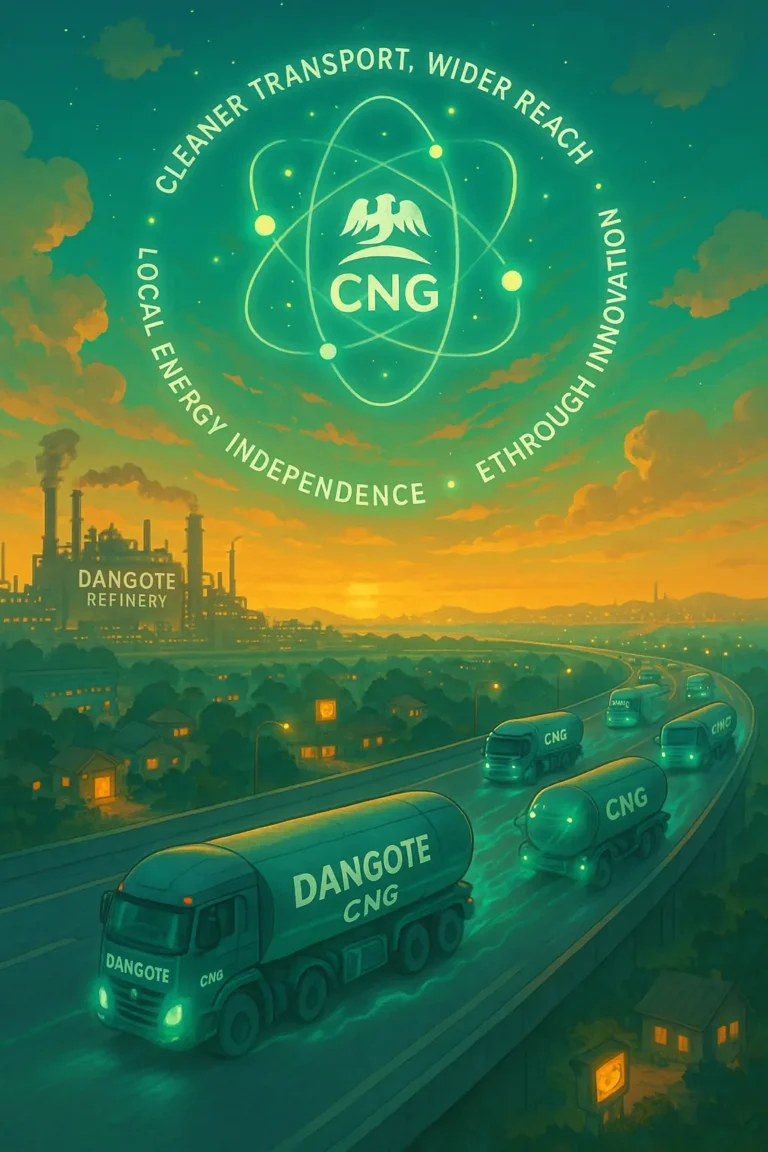
Walmart's Project Gigaton
Walmart’s Project Gigaton is a story of how the world’s largest retailer used supply chain partnerships to reduce over one billion tons of emissions, and what African logistics can learn from it.
Article Brief & Key Nuggets:
- Walmart Project Gigaton was launched in 2017 to remove 1 billion metric tons of emissions by 2030.
- Over 5,900 suppliers joined voluntarily, with support in energy, packaging, waste management, and transportation.
- The goal was met six years early, with carbon reductions equaling Japan’s yearly emissions.
- Success came from bold targets, supplier incentives, and collaborative implementation.
- African supply chains can replicate the model with smaller but measurable goals, local incentives, and shared tools.
Supply Chains Carry The Carbon. Walmart’s Project Gigaton Pushed Back
Most logistics professionals focus on trucks, warehouses, and ports when discussing emissions, which on paper makes a lot of sense. However, that approach overlooks the most significant issue.
Contrary to popular opinion, in retail, most emissions don’t come from the logistics process; they come from the production of the products themselves. Walmart discovered this in its carbon accounting years ago.
The company found that its direct emissions, categorized as Scope 1 and 2 by the GHG Protocol, were relatively small compared to the emissions from their suppliers, classified as Scope 3.
This insight led to Walmart’s Project Gigaton. It was a bold initiative to encourage its global suppliers to collectively reduce greenhouse gas emissions by 1 billion metric tons by 2030. Not through top-down mandates but through partnerships, toolkits, and shared targets.
The result was one of the most ambitious supply chain emissions reduction campaigns ever recorded. It changed how suppliers approach sustainability and demonstrated that climate action in retail can be effective at scale.
Why Was Walmart’s Project Gigaton Launched and What Informed The Target?
Walmart didn’t just wake up green.
Launching Project Gigaton in 2017 came from a mix of pressure and opportunity. The leadership of the company knew their supply chain emissions were massive. And they also knew they had the influence to do something about it.
Walmart doesn’t own the factories that produce the goods on its shelves. But it controls what sells and at what price. That leverage gave it a choice: continue ignoring Scope 3 emissions or lead a change. The company chose the latter.
Executives also saw a business case.
Greener supply chains are more resilient, efficient, and cost-effective. Energy-efficient factories cost less to operate, and better packaging means lower shipping costs. Smarter transportation cuts fuel use.
Walmart had already seen these savings in its own operations and believed suppliers could also benefit.
Rising customer expectations and investor demands made the timing urgent. Competitors like Target were setting green goals, and regulations were looming, so Walmart moved to get ahead of the curve.
Company leaders noted that integrating sustainable practices improves business performance, spurs innovation, and builds brand loyalty. Benefits that suppliers could also capture by joining the initiative.
Read more: The Story and Lessons Behind Bolt Food’s Exit From Nigeria.
How Walmart’s Project Gigaton was implemented
Walmart structured the initiative around six categories where suppliers could reduce emissions:
- Waste – Reducing landfill use, food waste
- Energy – Renewable power, energy efficiency
- Packaging – Lighter, recyclable, or reusable materials
- Nature – Agricultural practices, reforestation, soil health
- Transportation – Route optimization, freight consolidation
- Product Use/Design – Longer-lasting, lower-emission goods
Suppliers didn’t need to work on all six. They chose what fit their business. For example, a manufacturer might focus on improving factory energy efficiency, while a food producer might target reducing agricultural emissions or waste.
To drive success, Walmart leveraged its resources and scale to empower suppliers with tools and incentives such as:
- Online calculators to estimate emissions
- Best practice guides for each action area
- Webinars and workshops featuring environmental experts
This removed guesswork. Suppliers learned to measure, reduce, and report their emissions accordingly.
For bigger projects, Walmart added financial incentives. A green supply chain finance program (backed by HSBC) offered better lending terms to participating suppliers. Those with clear emissions goals could unlock cheaper capital.
Walmart also created a group renewable energy purchasing program. Smaller suppliers banded together to buy solar or wind power—deals they couldn’t afford on their own.
Walmart rewarded participation. The best performers earned a “Giga Guru” badge but it was more than PR. These suppliers got visibility with buyers inside Walmart and credibility with customers.
Progress was tracked yearly. Suppliers submitted emission reports, and Walmart tallied the savings toward the one billion-ton target. Every project counted, whether it avoided future emissions or directly removed them.
Read more: How UPS’ ORION Algorithm Transformed Its Route Optimization.
What Did Walmart’s Project Gigaton Change For Suppliers?
Thousands of suppliers had never measured their emissions before the Project Gigaton initiative. Suddenly, they were learning, planning, and reporting.
By 2023, more than 3,000 suppliers had active projects. Together, they helped Walmart achieve its goal six years ahead of schedule. Emissions avoided or reduced totaled over 1 billion metric tons, comparable to all of Japan’s annual emissions.
This was more than numbers. The mindset shifted, and sustainability became part of daily business, not a PR add-on.
Suppliers saw benefits such as:
- Energy upgrades cut costs
- Recognition improved reputation
- Less packaging meant cheaper shipping
- Access to green loans helped fund innovation
For instance, One Banana – a family-owned produce supplier was honored as a “Giga Gurú” in 2023 and 2024 for its sustainability innovations (like establishing bee habitat sanctuaries and upcycling surplus bananas into ingredients)
One Banana’s president noted that Walmart’s recognition “validates our main purpose: to create change for the better, one banana at a time.”
Even suppliers who did not win awards still moved forward. They started measuring and planning long-term goals. The Gigaton program also became a learning tool, especially for small and mid-sized vendors that had never focused on carbon before.
Walmart’s buyers noticed. Suppliers aligned with the company’s climate goals gained preference. The green supply chain became a competitive advantage.
Read more: Key Lessons From UPS Logistics Failure in 2013 and Failed Redemption in 2014.
Results That Changed The Conversation
By the end of 2023, Project Gigaton had done what few expected: reach 1 billion tons early. The company announced it publicly in 2024.
Walmart counted every ton:
- Emissions cut through efficiency
- Emissions avoided through better production
- Carbon captured by new trees and improved soils
Although some critics noted the counting included indirect benefits, like future emissions that may never occur, the scale and speed impressed environmental groups.
Nevertheless, environmental groups like EDF have pointed out that speed and participation at this scale are themselves remarkable, and that Walmart’s effort “clearly and strongly” encouraged many companies that might not have acted otherwise to begin decarbonizing.
Gigaton isn’t stopping. Walmart plans to continue this effort with new science-based goals. The company now aims for zero direct emissions by 2040 and is revising its Scope 3 targets. This means more accurate counting and deeper cuts.
The impact has spread beyond Walmart. Amazon, Target, and other retailers are now under pressure to act. Project Gigaton has raised the bar.
Read more: Learning From Cisco’s $2.25 Billion Inventory Collapse and Write-Off in 2001.
What Other Retail Supply Chains Can Learn
Walmart’s story may seem large and far away. However, the core lessons apply everywhere. Here are some of them:
1. Work With Suppliers, Not Against Them
Mandates don’t move people. Education and support do. African businesses can start by inviting suppliers into sustainability conversations. Share toolkits. Host workshops. Encourage voluntary reporting.
2. Set Big Goals, But Start Small
Walmart aimed for a gigaton. Retailers, especially the smaller ones do not need to match that. What matters is clarity. Set a 5% waste reduction target or a 10% reduction in transport fuel consumption. Track it. Report it. Celebrate progress.
3. Offer Incentives, Not Just Instructions
Cheaper loans, early payments, and preferred vendor status. These are examples of incentives that motivate action. Even small perks, such as public recognition, can influence behavior. Always align rewards with sustainability goals.
4. Give Suppliers Tools They Can Use
Don’t expect every supplier to have consultants. Provide simple guides on how to reduce packaging weight, optimize routes, or utilize local materials. Translate them. Make them mobile-friendly.
5. Measure Every Step
Walmart succeeded because it tracked progress. More retailers should build basic reporting systems. Spreadsheets work. Ask suppliers to submit simple data, including energy used, waste created, and materials saved.
6. Keep The Focus on Business Value
Sustainability must pay off. Efficiency, durability, fewer stockouts, lower transport costs—these are benefits suppliers understand. Talk their language. Link carbon savings to their wallet.
How African Retail Supply Chains Can Apply These Lessons
African businesses face significant constraints, including inadequate infrastructure, limited capital, and restricted access to data. But those are reasons to begin, not excuses to delay.
Walmart showed that collaboration, clarity, and commitment can turn supply chains into climate solutions. Here is how African supply chains can do the same:
1. Start with Clear, Local Goals
Walmart aimed for 1 billion tons globally. But that’s not necessary or realistic for smaller firms. What matters is setting one measurable, time-bound goal that makes sense in your context.
Clear goals provide direction, attract support, and create focus. Suppliers will act when expectations are specific and results are trackable.
2. Empower Suppliers Instead of Enforcing
Many African retailers rely on hundreds of small and informal suppliers. Forcing them into sustainability often fails. Instead, train and guide them.
However, Walmart’s success came from collaboration. African firms can build loyalty, enhance supplier capacity, and achieve results without relying on legal mandates.
3. Use Non-Cash Incentives to Motivate Change
Walmart gave suppliers better financing terms and public recognition. You can achieve the same effect on a smaller scale. Most African suppliers care about revenue, relationships, and exposure. Recognition and small business advantages go a long way in sparking change.
4. Make Measurement Simple and Mobile
Walmart required annual reporting. African businesses should require suppliers to provide light, easy, digital reporting. Most African SMEs can’t afford emissions software. But they can collect basic data on cost, energy, and waste. That’s enough to start tracking improvement.
5. Launch Group Programs to Reduce Costs
Walmart helped small suppliers join together to buy renewable power. African firms can help their suppliers buy green technology or training in bulk.
Collaboration lowers costs and increases access. Many small African suppliers want to improve, but can’t afford it alone.
Final Thought
Walmart’s Project Gigaton demonstrated that retail giants can influence thousands of suppliers to adopt green supply chain practices, without relying on legal mandates or sweeping bans. It was built on education, incentives, measurement, and bold targets.
The emissions cut was real. But more importantly, so was the shift in mindset. For logistics professionals across Africa, the takeaway is practical: You don’t need Walmart’s size to make an impact. You need a plan, a number, a toolkit, and a few willing partners.
Start now and keep it simple. Measure what matters and let your suppliers grow with you, not behind you. That’s how you build a sustainable supply chain—one gigaton, or one ton, at a time.

Obinabo Tochukwu Tabansi is a supply chain digital writer (Content writer & Ghostwriter) helping professionals and business owners across Africa learn from real-world supply chain wins and setbacks and apply proven strategies to their own operations. He also crafts social content for logistics and supply chain companies, turning their solutions and insights into engaging posts that drive visibility and trust.





